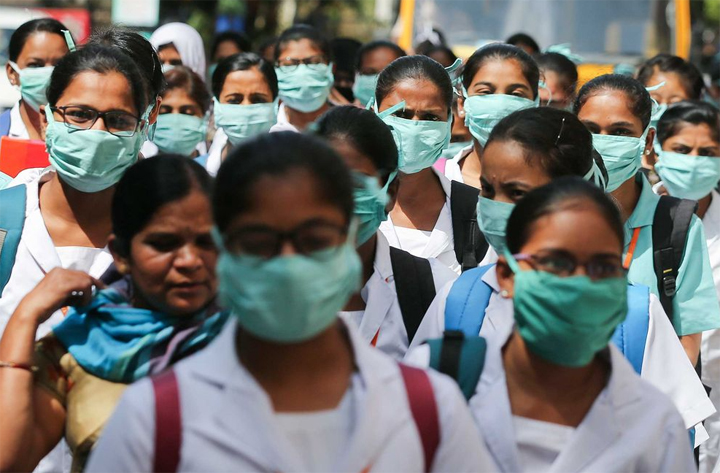
Singapore, Nov 4: Scientists have analysed the dispersion of coughs using airflow simulation and found that some smaller droplets, which are easily carried by the wind, travel up to 6.6 metres and even further under dry air conditions.
The Covid-19 pandemic has led many researchers to study airborne droplet transmission in different conditions and environments.
Scientists from A-STAR's Institute of High Performance Computing in Singapore conducted a numerical study on droplet dispersion using high fidelity airflow simulation.
The research, published in the journal Physics of Fluids, found that a single 100-micrometre cough droplet under wind speed of 2 metres per second can travel up to 6.6 metres and even further under dry air conditions due to droplet evaporation.
"In addition to wearing a mask, we found social distancing to be generally effective, as droplet deposition is shown to be reduced on a person who is at least 1 meter from the cough," said study author Fong Yew Leong.
The researchers used computational tools to solve complex mathematical formulations representing airflow and the airborne cough droplets around human bodies at various wind speeds and when impacted by other environmental factors.
They also assessed the deposition profile on a person at a certain proximity. A typical cough emits thousands of droplets across a wide size range.
The scientists found large droplets settled on the ground quickly due to gravity but could be projected 1 metre by the cough jet even without wind.
Medium-sized droplets could evaporate into smaller droplets, which are lighter and more easily borne by the wind, and these travelled further, they said.
The researchers offer a more detailed picture of droplet dispersion as they incorporated the biological considerations of the virus, such as the non-volatile content in droplet evaporation, into the modelling of the airborne dispersion of droplets.
"An evaporating droplet retains the non-volatile viral content, so the viral loading is effectively increased," said study author Hongying Li.
"This means that evaporated droplets that become aerosols are more susceptible to be inhaled deep into the lung, which causes infection lower down the respiratory tract, than larger unevaporated droplets," Li said.
These findings are also greatly dependent on the environmental conditions, such as wind speed, humidity levels, and ambient air temperature, and based on assumptions made from existing scientific literature on the viability of the Covid-19 virus, the researchers said.
The findings could be applied to designing environments that optimise comfort and safety, such as hospital rooms that account for indoor airflow and airborne pathogen transmission.




Comments
Add new comment